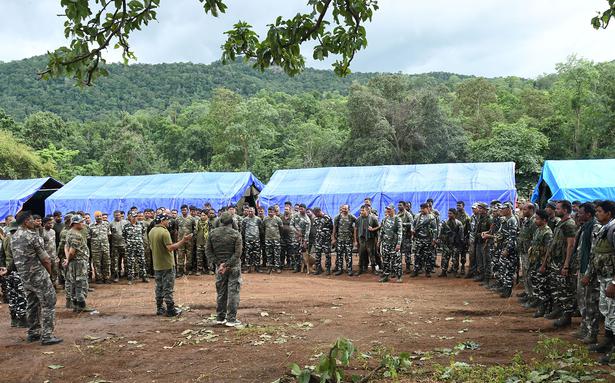The fall of Burha Pahar, a command centre of the CPI(Maoist) in the jungles along the Jharkhand-Chhattisgarh border, signifies a broader trend — the ultras are on the retreat across the country. Despite the gains made in depleting the strength of the rebels, the Union Home Ministry’s take-no-prisoners approach and expansion of security operations have raised human rights concerns. A report from the battlefields that are now calm
The fall of Burha Pahar, a command centre of the CPI(Maoist) in the jungles along the Jharkhand-Chhattisgarh border, signifies a broader trend — the ultras are on the retreat across the country. Despite the gains made in depleting the strength of the rebels, the Union Home Ministry’s take-no-prisoners approach and expansion of security operations have raised human rights concerns. A report from the battlefields that are now calm
Every monsoon, fresh spells of rain revitalise the rivers, waterfalls, streams and multitudinous brooks that flow out of the hills of Burha Pahar, a forested area spread over 50 sq. km in the trijunction of Latehar and Garhwa districts in Jharkhand and Balrampur district in Chhattisgarh. The rolling landscape offers a tranquil getaway for urban travellers and an inviting challenge for adventure seekers.
However, for over three decades, large parts of this picturesque terrain remained inaccessible as it served as the command centre of the Communist Party of India (Maoist), a banned organisation of left-wing guerrilla fighters engaged in constant battles with Indian security forces.
Early this month, a counter-insurgency offensive codenamed Operation Octopus — jointly launched by special teams from the Central Reserve Police Force (CRPF), its elite Commando Battalion for Resolute Action (CoBRA) unit, Jharkhand Jaguar, and the district police of Garhwa and Latehar — finally freed Burha Pahar from the control of Maoists. A large bunker was demolished and over 100 improvised explosive devices (IEDs) were recovered. Union Home Minister Amit Shah termed the mission a “historic milestone” in the fight against Left Wing Extremism (LWE) and lauded the troops that had led the offensive.
The area was one of the last bastions of the Maoist insurgency, which traces its roots to a 1967 uprising in Naxalbari, a village in West Bengal. The Maoists organised uprisings among landless workers in West Bengal, Bihar and Andhra Pradesh, and later spread to the mineral-rich States of Odisha, Chhattisgarh and Jharkhand.
In 2004, two armed wings, the People’s War Group in Andhra Pradesh, and the Maoist Communist Centre in Jharkhand and Bihar, united to form the CPI(Maoist). In 2006, the then Prime Minister Manmohan Singh described the rebels as “the single biggest internal security challenge ever faced by our country”. Armed conflict in the ‘red corridor’ has claimed the lives of about 16,650 security personnel in the past 40 years and 3,000 Maoists over the last two decades.

Commandos make their way to Burha Pahar.
| Photo Credit: KRISHNAN VV
Following the trail
Today News 24 followed the trail taken by the security forces to piece together the capture of Burha Pahar. Riding pillion on motorcycles driven by Jharkhand Police’s Small Action Team commandos, the team began its 13-km journey from Baresanr in Latehar district to Tisia village, which sits on the edge of the former Maoist stronghold. At Hatedih hamlet, the team met locals who complained about the State Forest Department’s objections to them gathering wood for putting up fences in their fields. But they remained tight-lipped when questioned about the Maoists on the run. After climbing over boulders on the nearby Tetuk Nullah, the squad reached a makeshift bridge, where the motorcycles had to be dragged through the sandy riverbed while crossing a tributary of the Burha river. The final five km of the hour-long trip was a bumpy ride through slushy terrain.
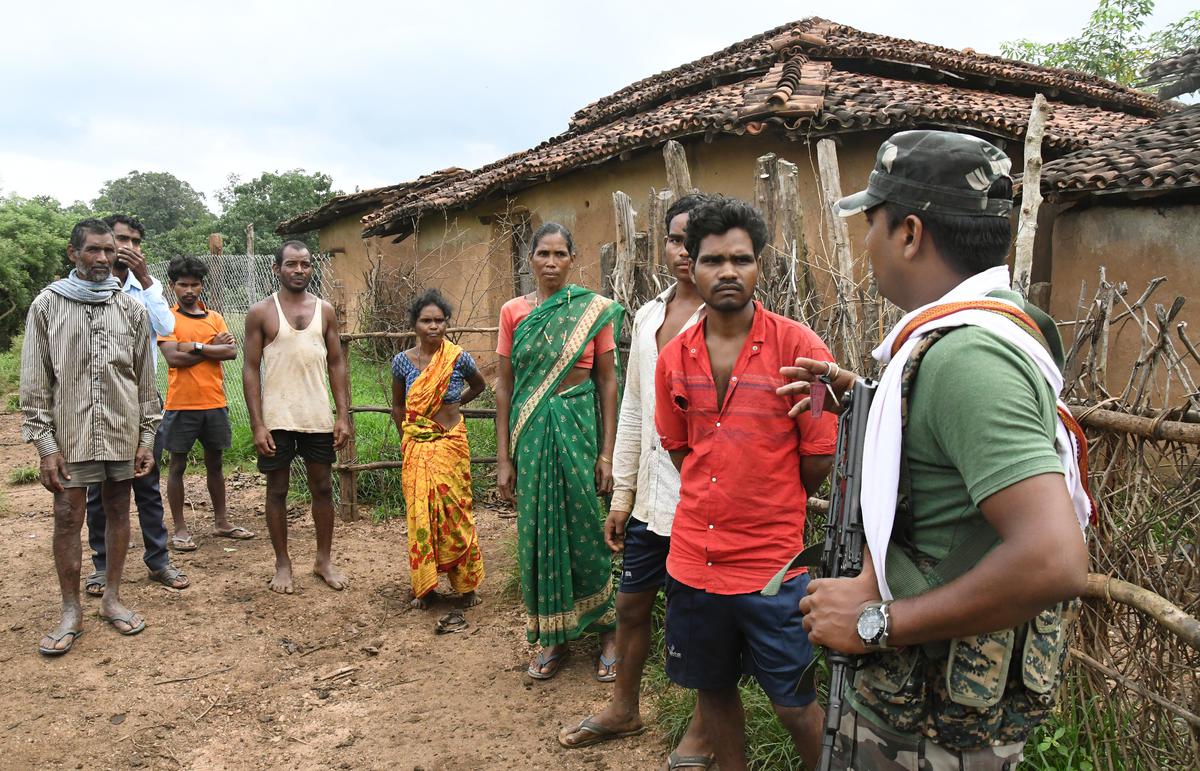
Residents of Hatedih village interact with a police officer.
| Photo Credit: KRISHNAN VV
“For the first time, we have entered deep into Naxal-dominated territory and established a base,” said an officer supervising work at the new camp being set up in Tisia village. Within days, multiple tents, basic infrastructure and a power generator were set up at the site. Expecting an ambush, sandbag bunkers and a barbed wire fence were also put up. The officer said they planned to source water from a nearby hamlet.

Security personnel in Tisia village.
| Photo Credit: KRISHNAN VV
The police said the Tisia camp would be instrumental in securing uninterrupted supply of essentials and conducting area domination exercises in the region that was once run by top Maoist commander Deo Kumar Singh alias Arvind ji, who fearlessly roamed the forests on horseback. A member of the central committee of the CPI(Maoist) who carried a reward of ₹1 crore on his head, Arvind ji died of an illness in 2018. He was succeeded by Oggu Satwaji alias Sudhakar, another central committee member, who carried a bounty of ₹1 crore in Jharkhand and ₹25 lakh in Telangana. Under his leadership, the Maoists continued to launch attacks. On June 26, 2018, six jawans of the Jharkhand Jaguar were killed in a landmine blast. In February 2019, Sudhakar and his wife Vydugula Aruna surrendered before the Telangana police. The charge of Burha Pahar then fell on central committee member Mithilesh Mehta alias Bhikhari. The same year, the Home Ministry set up more camps and relocated existing ones in consultation with States to plug the security vacuum. Since then, 108 camps have come up, including 22 in Jharkhand, five in Bihar and six in Odisha.

As the security forces closed in on the rebels, the number of arrests went up. The rate of surrenders also increased by 140% from 2,428 (2006 to 2014) to 5,816 up to May this year. In Jharkhand, among the 440 Maoists arrested last year were politburo member Prashant Bose alias Kishanda and central committee member Sheela Marandi.
This year, Rupesh Kumar Singh, who allegedly mobilised funds for the outfit’s operations, was arrested along with 309 other members of the organisation. Twenty Maoists surrendered last year and 12, including zonal committee member Maharaj Pramanik, gave up arms this year. Encounters in Jharkhand led to the killing of six Maoists last year and five till August this year.

Security forces in Latehar district.
| Photo Credit: Jharkhand Latehar
Tightening the noose
Over the past few years, a series of exercises have been undertaken to smoke out Maoists from Parasnath, Saranda, Kolhan and the Sarai Kela-Khunti-Chaibasa trijunction in Jharkhand and choke their funding channels. Assets worth ₹22 crore have been seized in LWE-affected States.
Crackdowns by Central law enforcement agencies on Maoists, however, have not been without controversy as several human rights activists have been embroiled in cases for their alleged links with the banned outfit. The special wing of the National Investigation Agency has registered 55 such cases, with over 50% of them lodged in the past three years. In July last year, Father Stan Swamy, an 84-year-old Jesuit priest, who spent five decades fighting for the rights of the tribal community in Jharkhand, died in judicial custody in Mumbai. He was one of the 16 human rights activists arrested by the probe agency under the Unlawful Activities (Prevention) Act for their alleged links with Maoists in the 2018 Bhima-Koregaon case.
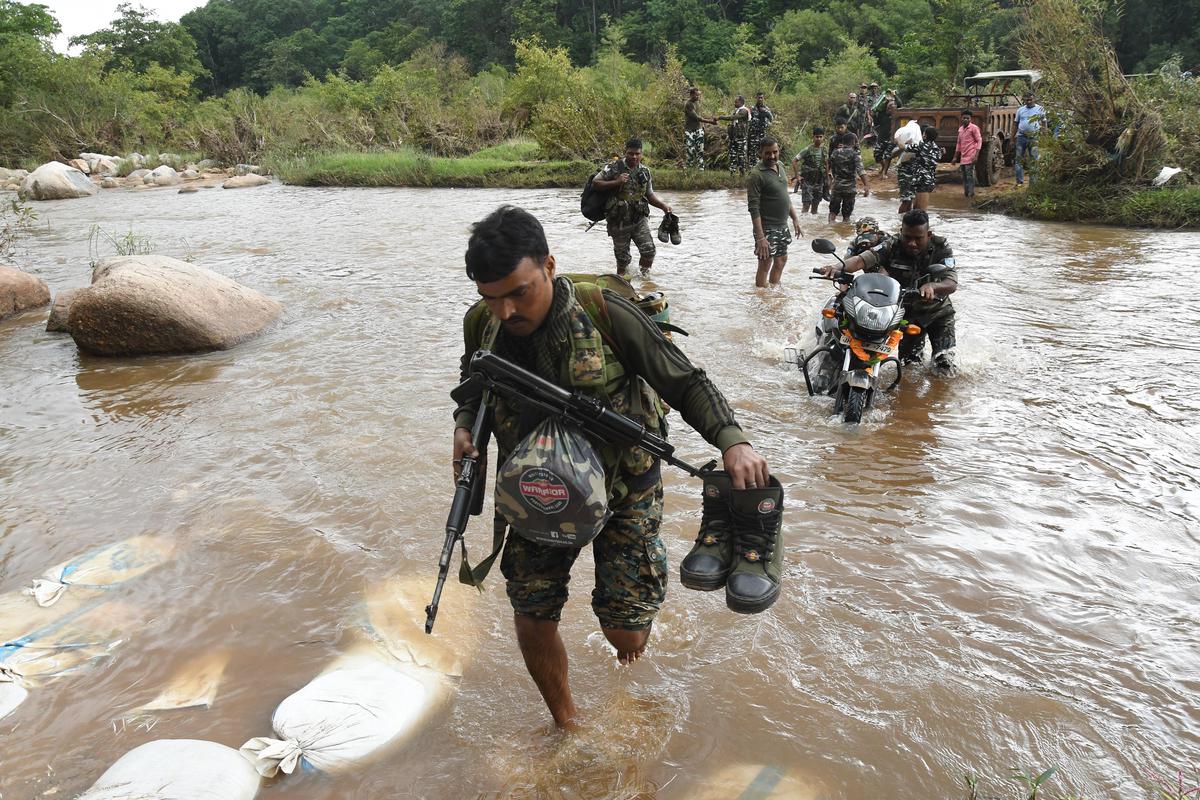
Security forces crossing the Burha river.
| Photo Credit: KRISHNAN VV
Clampdown begins
On February 8 this year, the security forces launched Operation Double Bull based on a specific input about the presence of several key CPI(Maoist) leaders in Bulbul and Peshrar areas in Lohardaga district and Gotag in Latehar district. Personnel from the CoBRA, Jharkhand Jaguar, bomb detection and disposal squads, 19 CRPF companies and local police took part in the exercise spread across 1,000 sq. km.
One Naxal commander was killed and three security personnel were injured in the offensive that lasted till February 21. The teams blocked the supply routes of Maoists, forcing them to flee after a brief gunfight. After the final face-off at Harkatatoli in the Pakhar hills, 14 Maoist leaders and their aides were arrested. Thirty firearms, 23 IEDs, and 194 kg of explosives, using which 750 small landmines powerful enough to blow off the lower limbs of security personnel could be made, were seized. “The operation had a debilitating impact on Naxal formations in Lohardaga, Gumla, Latehar, Simdega, Palamu and Garhwa districts. It created conditions for possible large-scale desertions and surrender of Naxals,” said Amol Vinukant Homkar, Inspector General of Jharkhand Police, who heads the Operations and State Intelligence Bureau wings.

Security forces crossing the Burha river.
| Photo Credit: KRISHNAN VV
In an intercepted conversation, Maoist leader Bhikhari was heard saying he “fears for his life”. He was arrested in Bihar’s Gaya in March based on a tip-off from Jharkhand Police. Sourav, the son of politburo member Jagdish Master, a founding member of the erstwhile Maoist Communist Centre, replaced him as the head of operations in Burha Pahar. Of late, the area had become the headquarters for Maoist operations in the Koel-Sankh zone comprising Palamu, Latehar, Garhwa, Gumla, Lohardaga and Simdega districts.
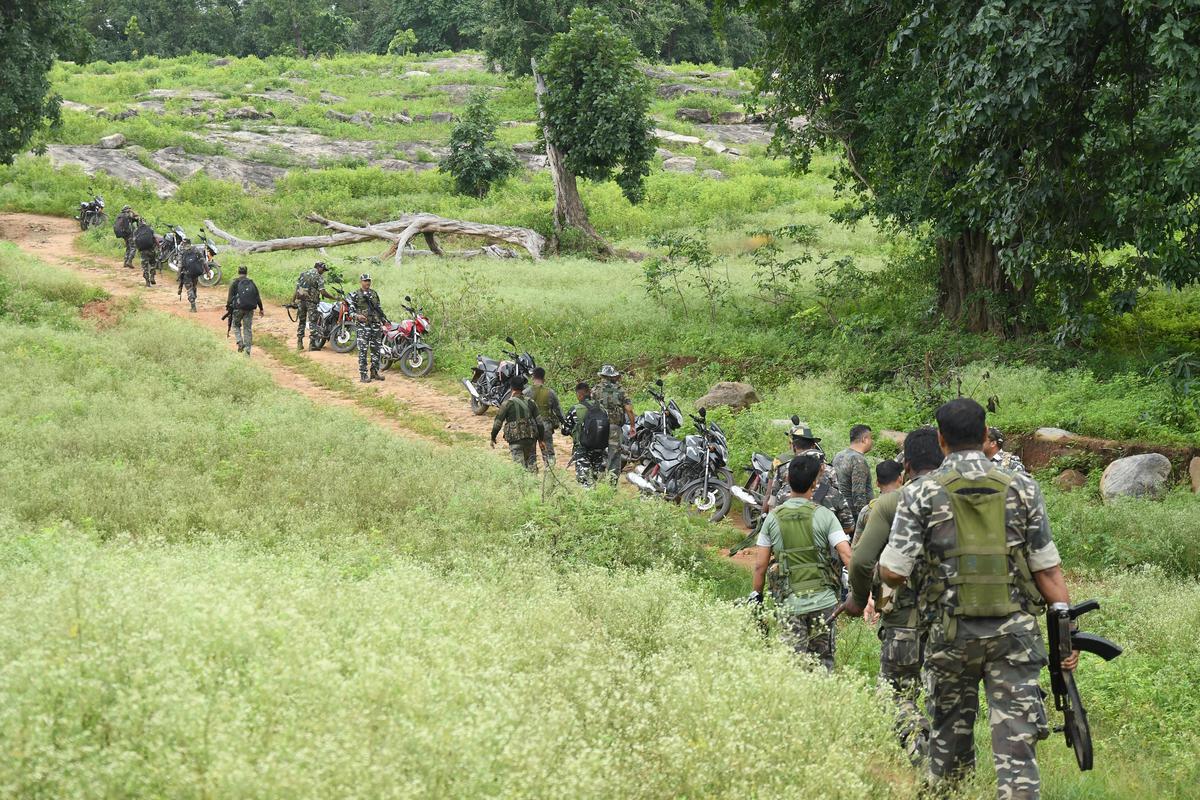
Security personnel enter the former Maoist stronghold.
| Photo Credit: KRISHNAN VV
The security forces then turned their focus on adjoining Bihar where over the past three-four years, Maoist presence in the Chakarbandha forests, spread across Gaya and Aurangabad districts, and the Lakhisarai-Jamui-Munger trijunction in the Bhimbandh forests had emerged as a major challenge. The CRPF set up six camps in the State between February and March. In April, the paramilitary force launched Operation Chakarbandha, which resulted in the Maoists fleeing to Palamu and Chatra districts in Jharkhand.

A camp set up at Tisia village.
| Photo Credit: KRISHNAN VV
Follow-up action in June and August led to the collapse of Maoist infrastructure in Bihar. All major leaders of the outfit in the Bhimbandh forests had either surrendered or were arrested, dealing a major blow to the insurgents. Most of the 2,500 landmines planted in the area were detected and destroyed. A CRPF official said the rebels earlier placed a series of IEDs that were “command-detonated” by wired or wireless remote devices. However, in the recent past, they often carpeted the area surrounding their hideouts and bunkers with 30 to 50 IEDs containing just 250 gm of explosives that used syringes as pressure activators. The moment someone stepped on the IED, the syringe was depressed and the bomb went off. “The main objective was to incapacitate security personnel by blowing off their legs,” the official said.
The final assault
Jharkhand Director General of Police Niraj Sinha said the inputs gleaned from the previous operations proved vital in executing the final assault on Burha Pahar. He said in mid-August, the advance of the security forces into the safe haven of the Maoists was hampered by heavy rain.
On September 4, after several brainstorming sessions, senior officers decided to launch Operation Octopus. Over 25 companies of joint forces were pressed into action to strike a final blow to the Maoists, said an officer who was part of the war room. Two teams — one from the CRPF camp in Pundag in Chhattisgarh and the other from Tisia and Nawatoli villages in Jharkhand — had to cross rivers, navigate dense forests, scale steep hills and evade landmines while making their way to Burha Pahar. The first team reached the Maoist hotbed the same night and the second unit soon joined it. After a brief exchange of fire, the Maoists took to their heels, the official said. Within hours, tents were set up and a helipad was built atop the hill as a contingency measure.
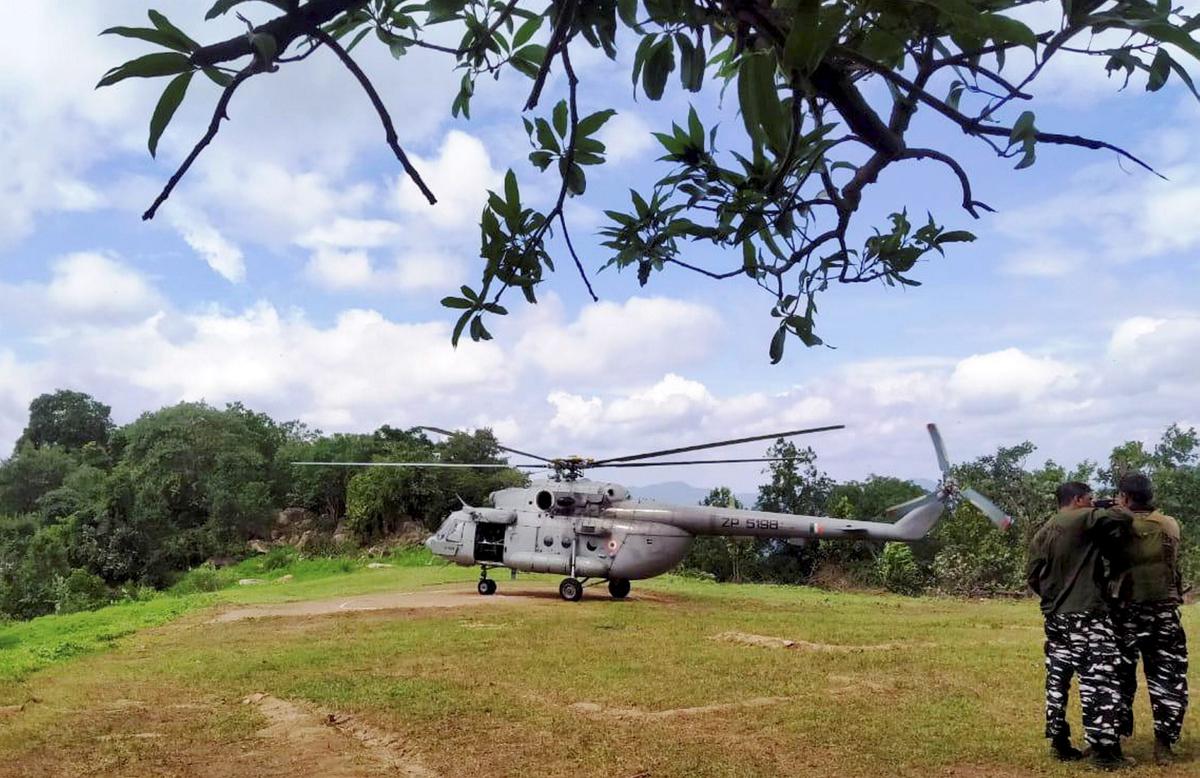
An MI-17 helicopter at Burha Pahar.

Operation Octopus was launched in Jharkhand.
| Photo Credit: VV Krishnan
On September 21, CRPF Director General Kuldiep Singh said following the operations, Burha Pahar and the Chakarbandha forests had been “completely cleaned off and captured”. “We want to ensure that the Maoists get no chance to return to these areas now,” he said. Mr. Singh said this year, in comparison with 2018, there had been a 39% reduction in incidents of LWE violence, a 26% dip in the number of casualties suffered by security forces and a 44% fall in civilian deaths.
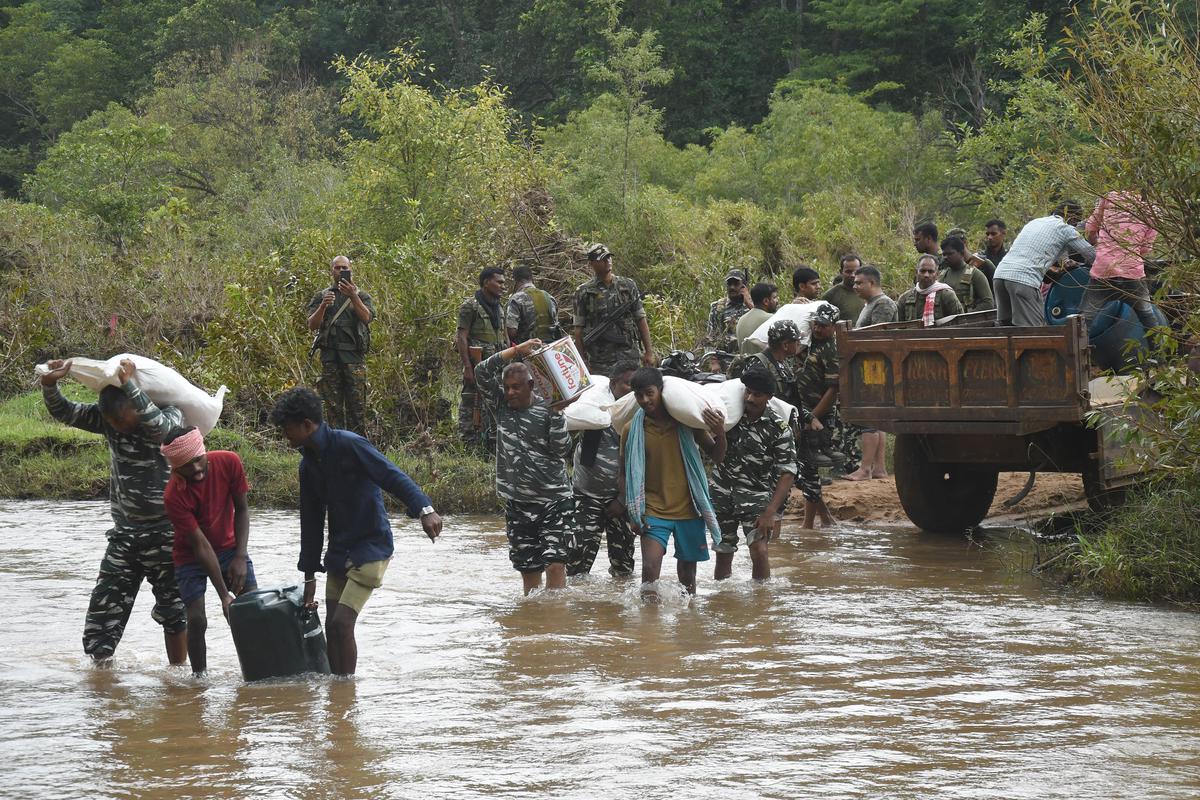
Security forces transporting goods across the Burha river.
| Photo Credit: KRISHNAN VV
The number of LWE-affected districts dropped by 24% to just 39 (128 police station areas) in 2022, he added. Of these, only 25 were in the category of most violence-prone districts, Mr. Singh said, adding that the areas under the control of the Maoists were now “shrinking”.
On September 23, at a security review meeting chaired by Jharkhand Chief Minister Hemant Soren, police officials said 27 Maoists had been killed and 1,131 arrested in the State since January 2020. A total of 108 gunfights took place between the Maoists and the security forces between January 2020 and August 2022, and 45 Maoists surrendered before the police. The officials said eight of the State’s 24 districts were LWE-free.
On July 20, Minister of State for Home Nityanand Rai had informed the Rajya Sabha that incidents of Maoist violence had declined by 77% from an all-time high of 2,258 in 2009 to 509 in 2021. “Similarly, the resultant deaths (civilians and security forces) have reduced by 85% from 1,005 in 2010 to 147 in 2021,” the Minister said. Only 46 districts reported LWE-related violence in 2021 compared with 96 in 2010, Mr. Rai said.

Villagers and CRPF personnel construct a makeshift bridge near the security camp at Burha Pahar.
Road to development
At the Tisia camp, villagers have gathered to witness the security personnel at work. “Just days before the camp came up, the Maoists were spotted in the jungles. They demanded cooked meals and threatened us with dire consequences if we spoke to the police. They have now fled,” said Uday Kumar Yadav, a resident of Nawatoli, whose uncle was killed in an IED blast last year.
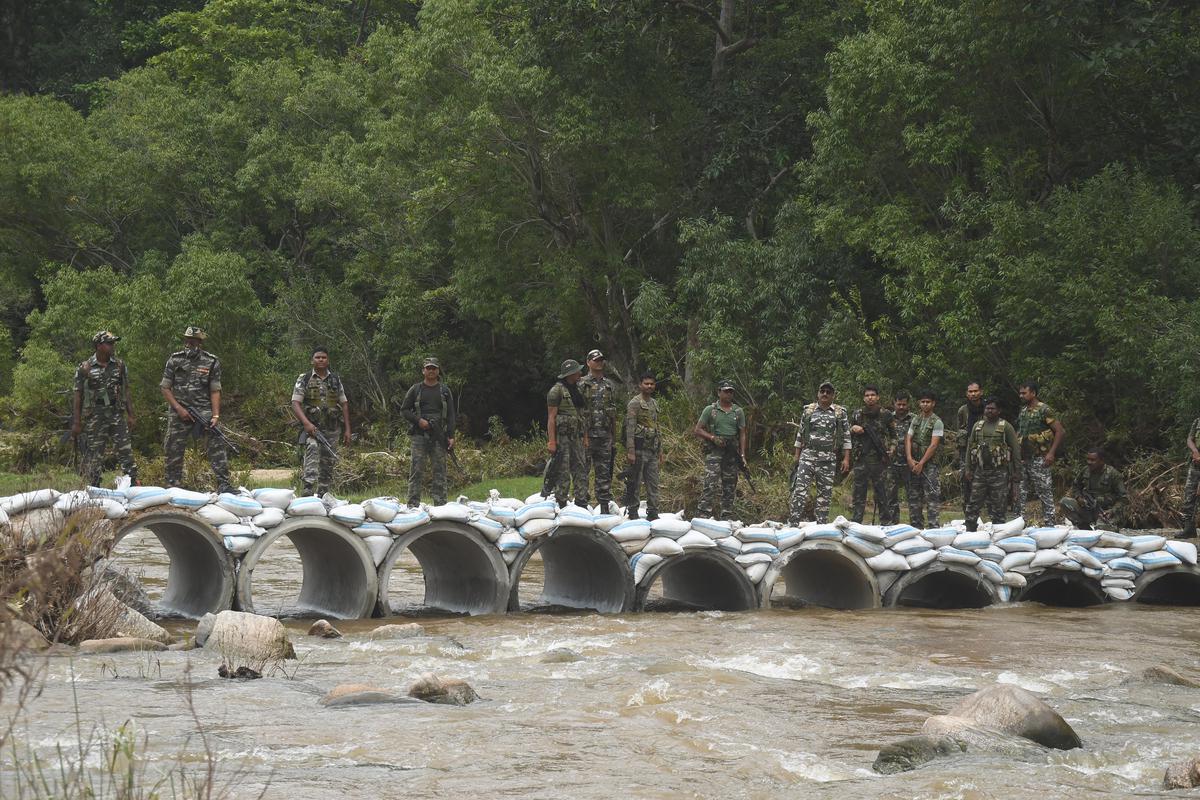
A bridge built by placing sandbags on Hume pipes (concrete tubes).
| Photo Credit: KRISHNAN VV
The security personnel said a team led by Latehar Superintendent of Police Anjani Anjan had helped them identify land for the Tisia and Nawatoli camps, and secure excavators and workers to flatten a boulder-strewn track. When strong currents in the Burha river made it difficult for tractors to transport construction material, Mr. Anjan suggested forming a bridge by placing sandbags on Hume pipes (concrete tubes). The bridge was built in just 12 hours, facilitating the movement of excavators and tractors. Within a few days, the camp site was cleared of boulders and levelled.

Locals collect wood at Tisia village.
| Photo Credit: Jharkhand Latehar
Not far away from the camp lies the ruins of a school building. When a villager pointed out that teachers seldom visited the school, Mr. Anjan gave orders for the construction of a makeshift school and the distribution of books and uniforms to students. He also urged the villagers to open shops to provide supplies to security personnel at the camp. “It will create long-term livelihood opportunities for them,” Mr. Anjan said, adding that similar initiatives would be undertaken at Nawatoli where work is in progress to build a camp.
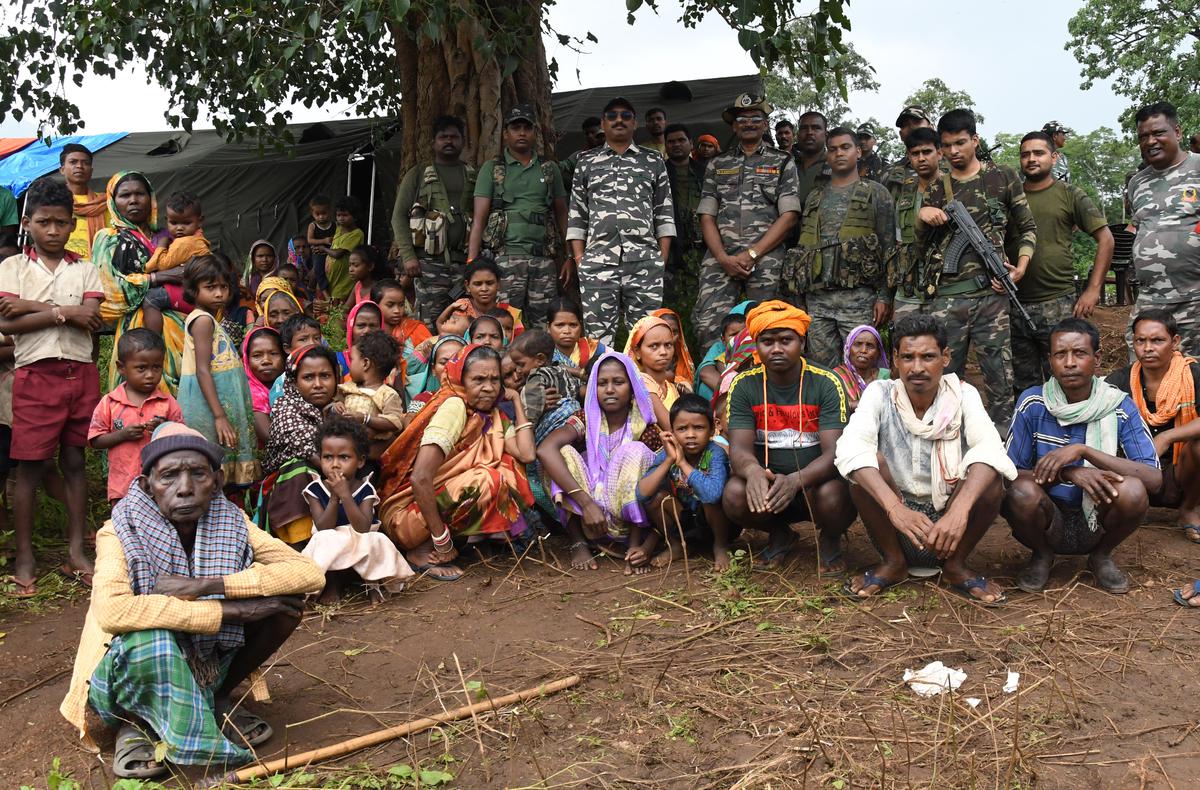
Locals at the Tisia village.
| Photo Credit: VV Krishnan
The fall of Burha Pahar offers the hope of development to villagers who have borne witness to the Maoists bringing government projects to a grinding halt. Officials cited the example of the Kutku Mandal dam on the North Koel river in the Palamu Tiger Reserve. They said construction of the dam had started in 1974, but it was stalled in August 1997 after the Maoists executed an engineer whom they had held responsible for flooding in the area that led to the death of several villagers. In 2019, Prime Minister Narendra Modi laid the foundation stone for the completion of the project. “We are hopeful that counter-insurgency operations will instil confidence in the contractors to resume work,” an administration official said.



